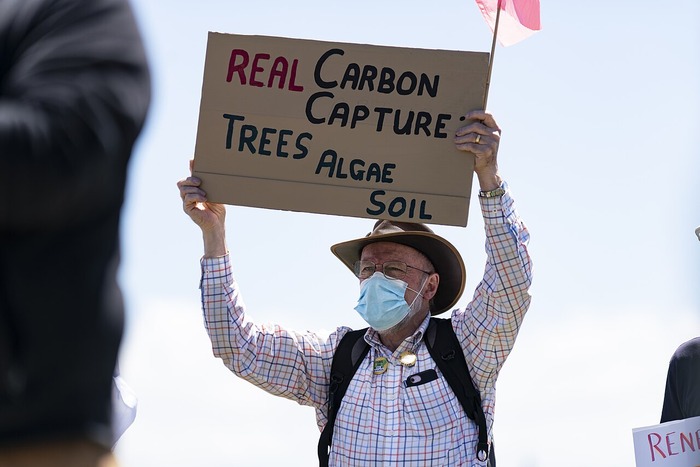This method has lower chemical and operational costs, better control over reaction conditions, but economic viability for mass-scalability remains to be tested
The predominant debate against carbon capture, utilisation and storage (CCUS) technologies is that they are expensive, and perhaps even unviable. Then again, achieving net zero emissions is “virtually impossible” without CCUS, according to the International Energy Agency.
Which is why carbon sequestration plays a key role. Within that, there’s a subset of research which is taking place in carbon mineralisation – a chemical reaction through which the planet warming gas, carbon dioxide (CO2), is converted into solid minerals like calcite or magnesite.
A new research paper vouches for a new-fangled method of carbon mineralisation where dissolved inorganic carbon reacts with mineral cations such as Ca2+ and Mg2+ to form stable carbonate minerals, enabling permanent carbon sequestration and storage.
Titled ‘Biomimetic mineralisation for carbon capture and sequestration’, the paper’s findings “highlight the potential and feasibility of biological carbon mineralization processes to contribute towards sustainable carbon sequestration.”
Taking a different route
The common carbon sequestration methods are deep-ground injection, ocean storage, and enhanced oil recovery (EOR). Deep-ground injection, while effective in storing large volumes of CO2, is dependent on geological conditions of the rocks deep in the earth’s surface, and runs the risk of rupturing in the case of seismic activity. Furthermore, monitoring and verifying the effectiveness of this process is difficult, cites the paper.
Ocean storage might result in the pH level of the ocean water to drop, which can lead to ocean acidification, and adversely affect marine life. In the case of EOR, preventing leakage of CO2, guaranteeing long-term success and environmental sustainability are major challenges as well, according to the paper. For all three methods, there’s a risk that the CO2 might escape back into the atmosphere.
On the other hand, carbon mineralisation offers a safer alternative, as the CO2 is turned into rocks. Biomineralisation, especially, is more sustainable, as it uses biomolecules, processed through chemical reactions, to help the CO2 mineralization – mimicking natural biomineralization processes, according to the paper.
The method used by the researchers differs from current methods, which are mainly physicochemical in nature. There are multiple drawbacks of this approach – they require substantial chemical and energy consumption and can have significant adverse environmental impacts, according to the paper.
Tapping into nature
The paper says that marine organisms, like corals and mollusks, use the biomineralisation process to build their exoskeletons by absorbing CO2 dissolved in ocean water. Around 5 billion tons of calcium carbonate are produced in the global ocean per year, with about 60 % of them accumulating in the sediment, equating to around 1.4 billion tons of CO2 stored in the ocean each year – or 5 % of annual emissions from fossil fuel combustion and industrial processes, cites the paper.
After these organisms die, their carbon-stored shells and skeletons sink to the ocean floor, effectively removing carbon from the surface ocean and atmosphere.
Harnessing this power, the natural biomineralisation process requires minimal energy input, is effective under ambient conditions, and has low environmental impacts, found the study. There are other advantages like lower chemical and operational costs, better control over reaction conditions, greater robustness in various environments, and fewer side reactions, found the paper.
Also, mineral cations needed for this process are found in abundance in ocean water and industrial waste, which makes the process even more eco-friendly if these sources can be tapped. So, biomineralisation is sustainable, low-cost, and does not rely on scarce resources, argues the paper, suggesting that it can play a significant role in eco-friendly and viable carbon sequestration efforts.
At its current technological level, biomineralisation has a few disadvantages as well. They are predominantly at the laboratory scale, and scaling these up for mass use still has to undergo the test of economic viability. Another issue is that once the carbonate minerals are formed, they remain entrapped in the minerals, preventing recycling. So, continuously using new biocatalysts is required, which raises costs, found the paper.
About The Author
You may also like
Can Private Players Reinvent India’s Forecasting Future?
Polar Geoengineering Projects Unlikely to Stop Melting, May Harm Ecosystem: Report
Inside India’s Struggle to Build a Reliable Early Warning System
Parked Vehicles Significantly Intensify Urban Warming: Report
Quarter of Pledged Emission Cuts at Risk Due to Lack of land-use finance: Report

